Once again, you try to get your puppy used to the crate, but it’s in vain. He whines and tries desperately to get out. Does this situation sound familiar? In fact, many people complain that their puppy hates the crate. But after all, crates are essential, for example, for transportation in the car or on the plane. So what can you do?
I decided to analyze the reasons for this behavior in puppies and gathered all possible solutions to this problem. I think that at least one of them will help you.
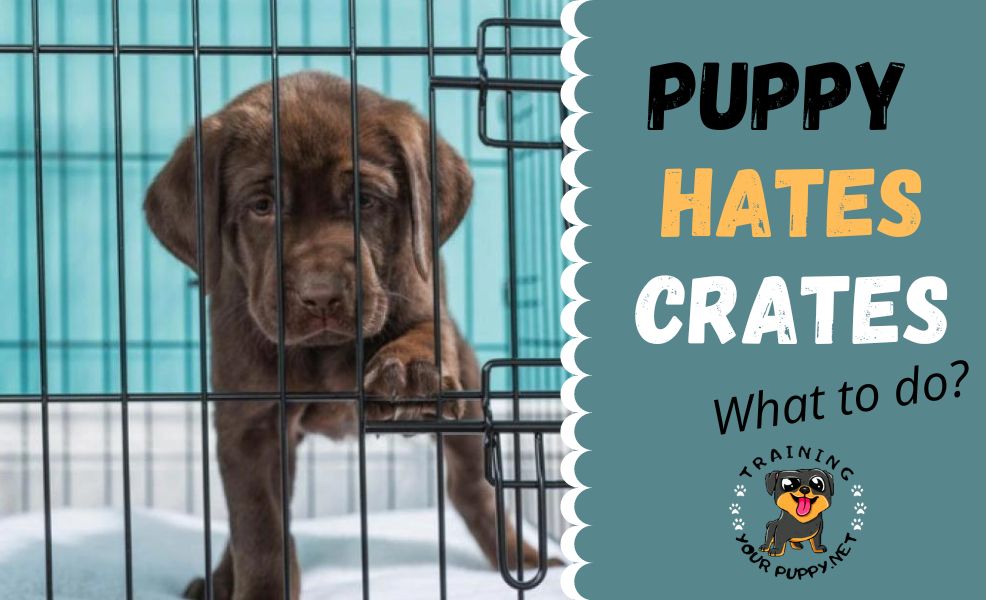
Contents
Why do some puppies hate crates?
I want to describe why your puppy might behave this way. Understanding the reasons helps you look at the situation differently. So, what could it be?
- 👉Often puppies hate crates due to improper training. Initially, the owner should help his furry friend get used to and love his new shelter. If you start to close the puppy from the first days for a long time without any foreplay, he’ll hate his “prison” Therefore, it is right to introduce your puppy to the crate gradually.
- 👉Hatred of the crate can come from traumatic experiences. For example, a puppy heard a thunderclap when he was in the crate, or the crate was used for punishment.
- 👉Shelter dogs hate cages because they had to be locked up for a long time. Such an animal needs time and proper training to get rid of fear.
- 👉The dog may not feel comfortable. Maybe the crate is too narrow, uncomfortable for the dog’s paws, or makes unpleasant noises. Or perhaps it’s very hot because the crate is standing near a heater. Then it’s no wonder the puppy doesn’t want to stay inside.
A puppy can hate a crate if you keep him locked up too long and too often. In the chart below, you can find information on how long you can keep your dog crated:
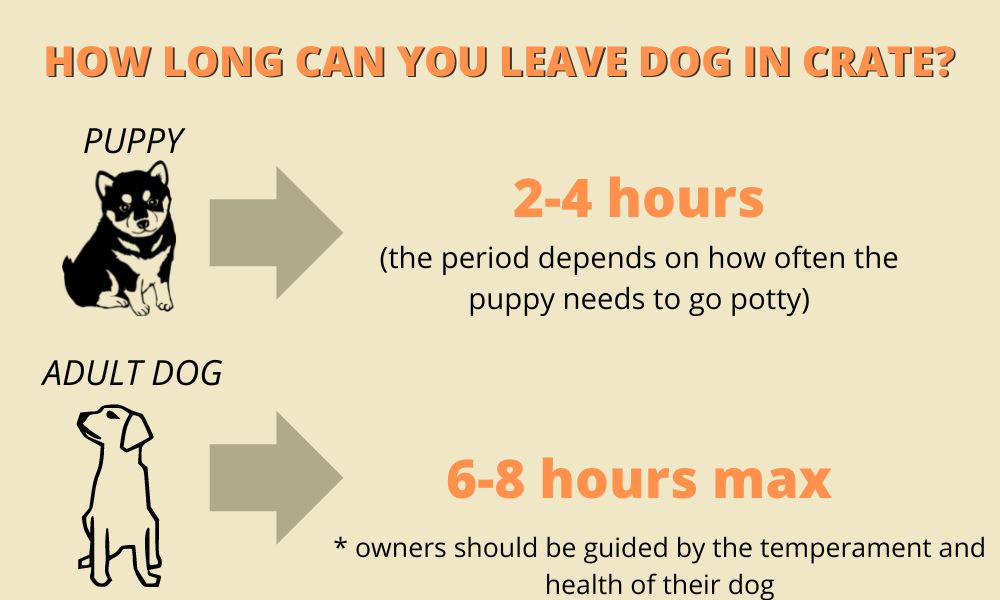
10 ways to solve the problem if your puppy hates crates
#1. Help your puppy get used to the crate
Maybe you only used the crate when you need to go somewhere and leave your puppy alone. If so, the crate will only be associated with unpleasant moments for him. Change your tactics.
Leave the crate unlocked and let the puppy get in whenever he wants to. Make the crate a place to rest, a place where the puppy can hide.
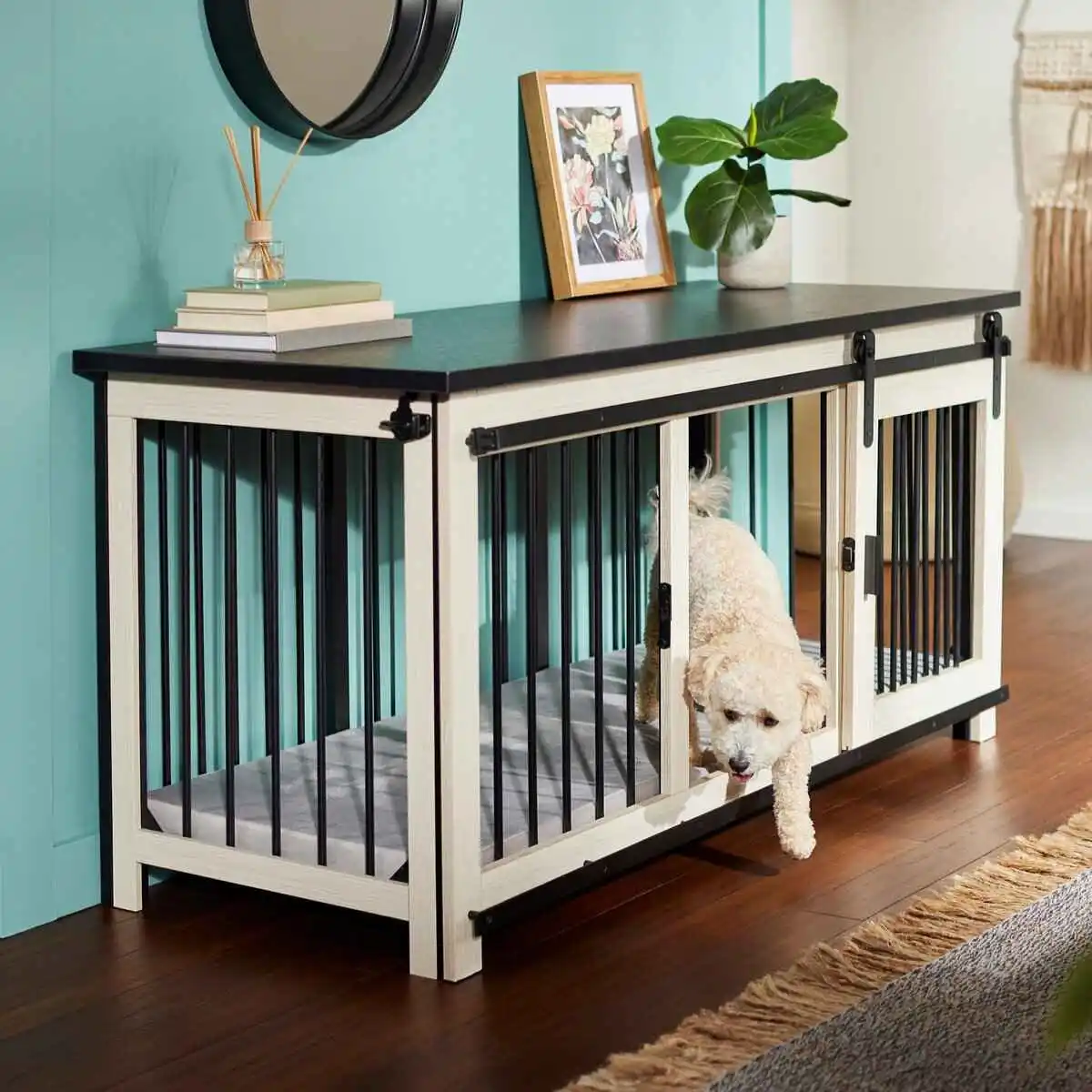
#2. Make it cozy
To get your puppy to love his kennel, make it a cozy place. Put in a comfy bed and your dog’s favorite toy. A Kong with treats is great for this purpose. It will keep your dog engaged for a long time; besides, chew toys are good for calming.
Check out my selection of the best dog crate toys to find something for your pup.
You can also try using a crate cover. Some dogs feel more comfortable when no one can see them.
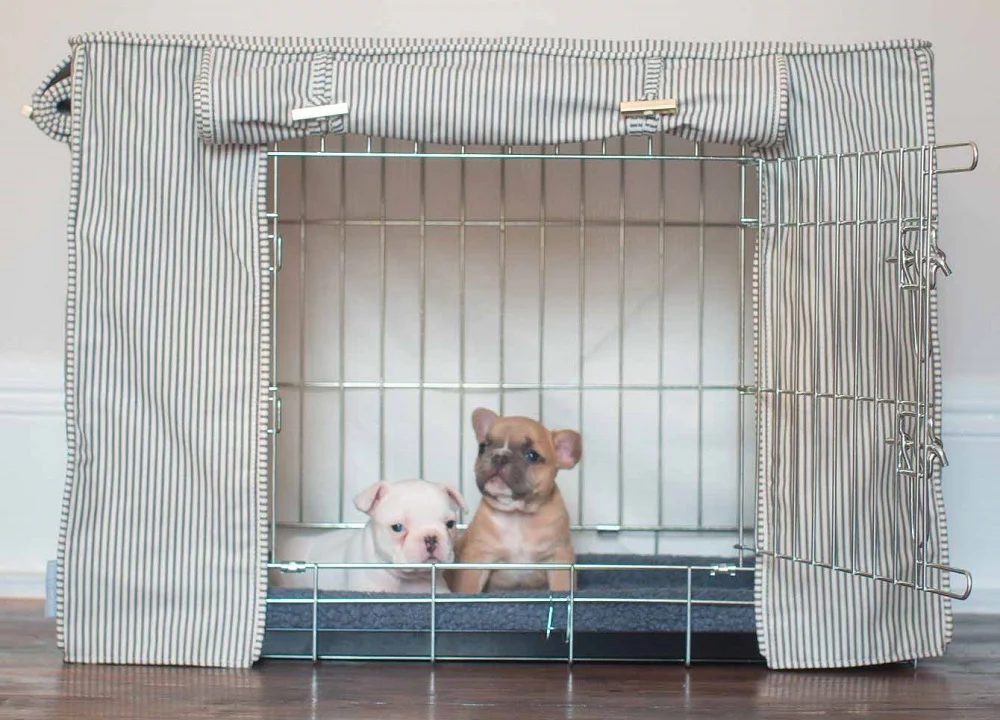
#3. Change the crate or its location
The crate may be too small and uncomfortable for your puppy, and that’s why he hates it. Does it squeak or make unpleasant noises? Then you need to buy another one and start all over again.
The problem could also be the wrong location. It should be a secluded but not isolated corner. You shouldn’t place it near heat sources or other things that can cause discomfort.
If you want to learn more about this topic, read my article about the best place for a dog crate.
#4. Feed your puppy in the crate
Another way to create positive associations with the crate is to feed your puppy there. When it’s time for feeding, put the bowl in the crate. Don’t lock it. This option can help if your puppy doesn’t even want to approach the crate.
You can also use treats🦴. Put them in the crate first and call your puppy. When he comes to you and eats the treat, praise him. Then put the treat in the crate.
Later, you can hide the treats in the crate throughout the day and your puppy will come by every now and then to see if there’s anything yummy in there.
#5. Close the door gradually
The adaptation period can take weeks or even months. Try closing the door when the puppy gets used to the kennel and starts to come inside.
If your dog is very reactive to a closed door, you must be carefull:
- You can start by closing the door just for a moment, and when the dog realizes it, immediately give him a treat and open the door.
- Gradually increase this time from 1-2 minutes to 10 or more. Sometimes you may not lock the latch but only shut the door.
- When the puppy gets used to being in a closed crate when you’re around, move on to the next stage. Try going into the next room, further outside, and finally out of the house. Come back at different times so the puppy can’t predict when you’ll return.
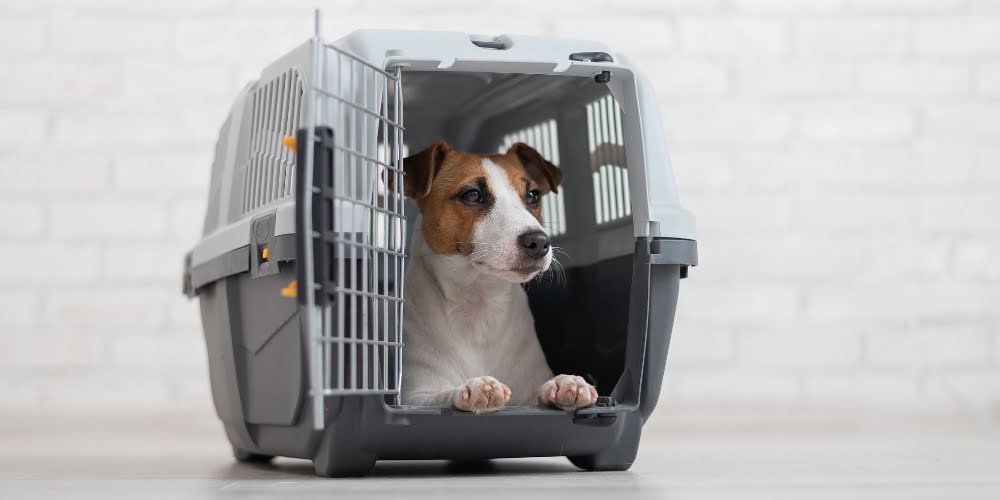
Crate-hating puppies usually try to escape. As a result, they may destroy the kennel and hurt themselves. Therefore, you should choose an indestructible crate for such cases to keep your pet safe.
#6. DO NOT give in to whining
Your puppy may start whining or barking in his crate, but you don’t have to release him immediately. If you follow these manipulations, the pet will protest again, just not to be left alone.
Ignore crying and other noises. Don’t even look at your pet. Be patient and don’t open the door until the puppy calms down. It may be a small moment, but you have to catch it.
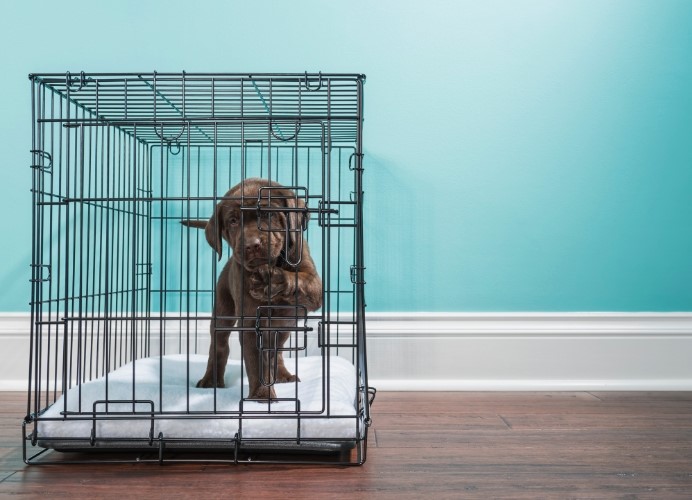
Over time, the puppy should learn that whining doesn’t work and he will only be released for quiet behavior. You can learn more about this in the article “What to do if your puppy is crying in his crate.”
Of course you're worried about how your puppy is doing. With a special camera, like the PetCube, you can keep an eye on him. This is a wonderful tool for all dog owners.
#7. Use soothing remedies
To help a restless dog relax in the crate, you can use a variety of soothing remedies, such as:
- special treats (they contain natural ingredients that have a calming effect);
- diffusers (which spray aromatic oils);
- a calming bed (these beds usually look like a cozy, soft nest where the dog feels comfortable and safe);
- a shirt (it gently presses down on the dog, acting like a swaddle on babies).
These are just additional tools that should be used in conjunction with other crate training methods.
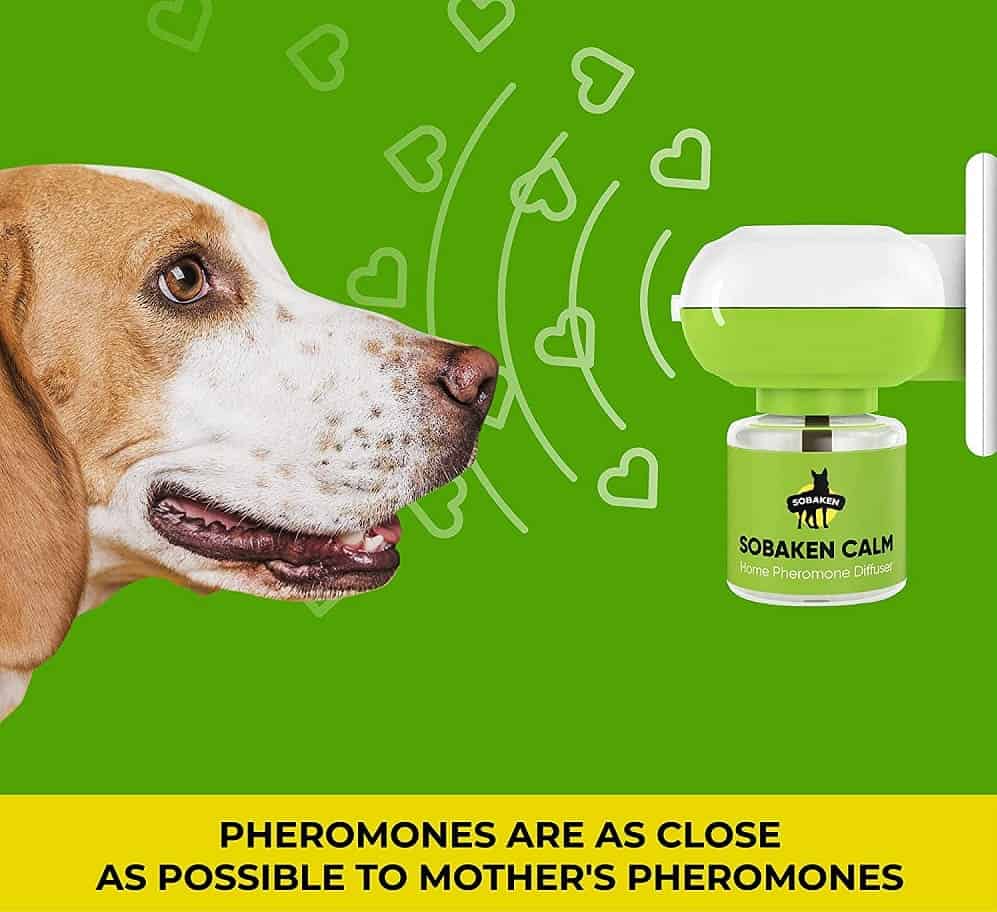
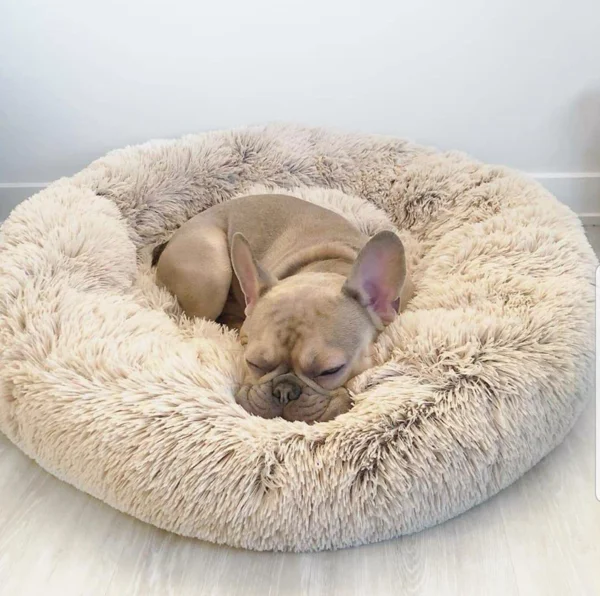
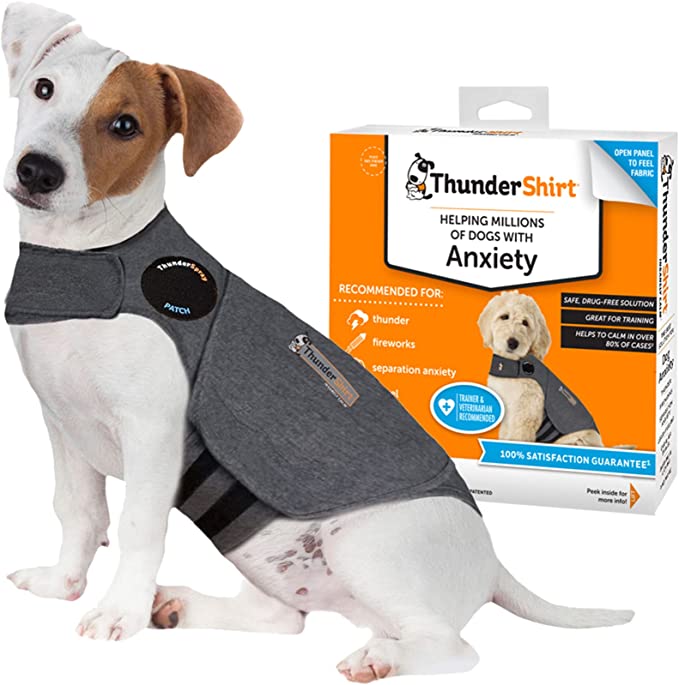
#8. Play more with your puppy
Dogs that don’t get enough exercise can behave destructively. If a puppy has a lot of unused energy, he certainly doesn’t want to be cooped up. This can also cause him to hate the crates.
So you need to spend plenty of time walking and playing active games. Different breeds may require more physical activity, so you should focus on your pet.
Walk your dog before crating, and he will have less energy to protest. It will also satisfy the dog’s need for communication.
#9. Contact a dog trainer
If you don’t have the energy or time for dog training, why not find a dog trainer?
You may not even realize you’re doing something wrong, and the expert will figure out the cause of this behavior and help you deal with it. When I watch trainers, I’m always amazed at how well they understand dogs and can correct their behavior. But of course you have to find a good trainer.
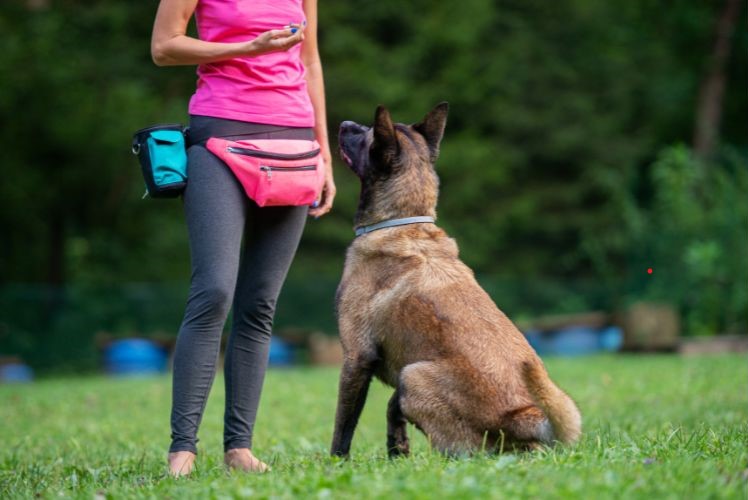
Your puppy may have separation anxiety. Animals with this disorder react acutely to separation from their owner and may behave furiously and destroy things. If you notice this behavior in your puppy when he is out of his cage, it makes sense to contact your veterinarian or a dog behaviorist.
#10. Try alternative methods
If crate training is causing much distress for your puppy and you, then it is better to give up the idea, at least for a while. Try alternative methods:
- use a dog playpen or even set aside a separate small room to keep your dog safe while you’re away;
- use a dog carrier bag to transport your dog.
Here are examples of a dog pen:
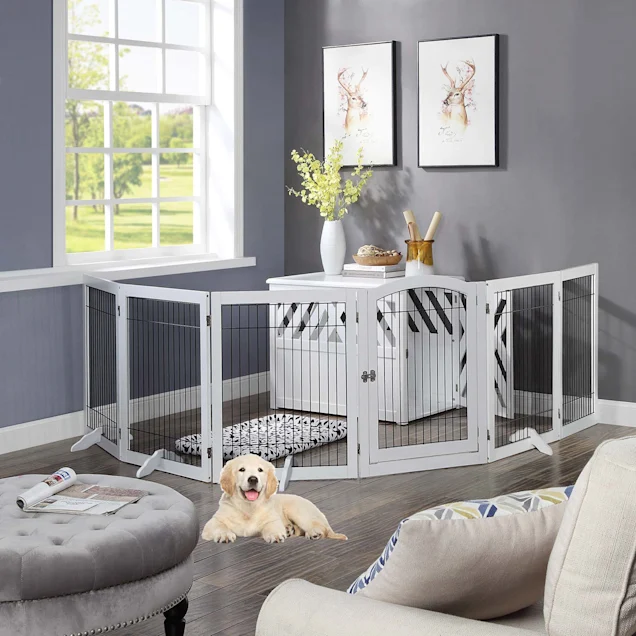
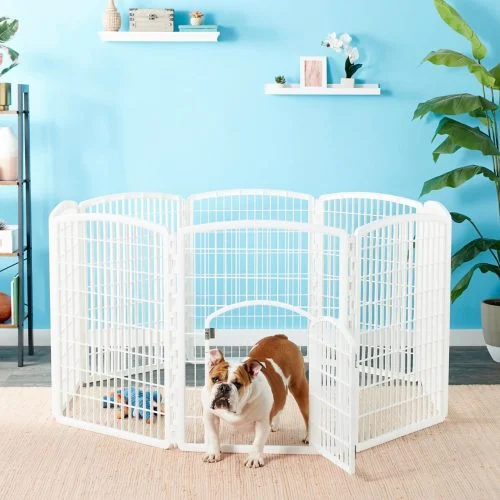
However, try to use the crate because it is essential. For example, you may need to take your puppy on an airplane trip or leave him in the hospital. Then a crate is definitely needed, and it would be a pity if your dog is against it.
Conclusions
If your puppy hates the crate, you can help him love it. Just create the right conditions and be patient. Leave the crate open in the beginning so your puppy can get used to it and go in and out when he wants. Put a food bowl and appropriate toys inside.
Do the puppy training gradually and without pressure. And if this task is too difficult for you, contact a trainer.
Sources:
https://www.whole-dog-journal.com/training/crates/what-to-do-when-your-dog-hates-his-crate/
https://www.petmd.com/dog/training/what-do-when-your-puppy-whines-his-crate
https://dogcare.dailypuppy.com/dog-hates-his-crate-6488.html
https://www.akc.org/expert-advice/training/how-to-crate-train-your-dog-in-9-easy-steps/